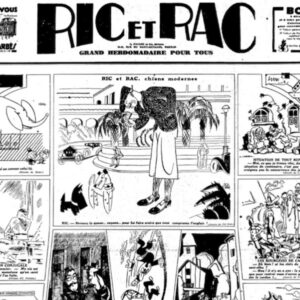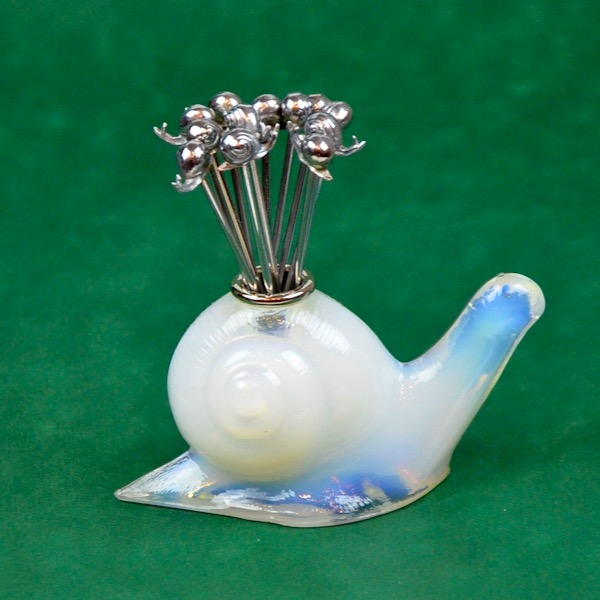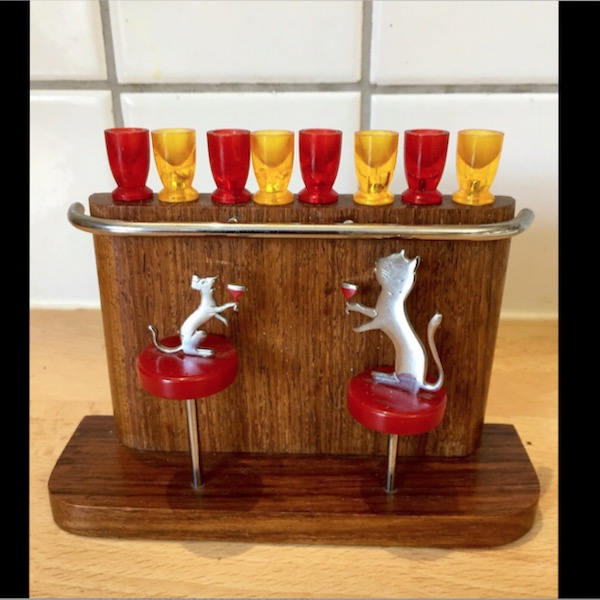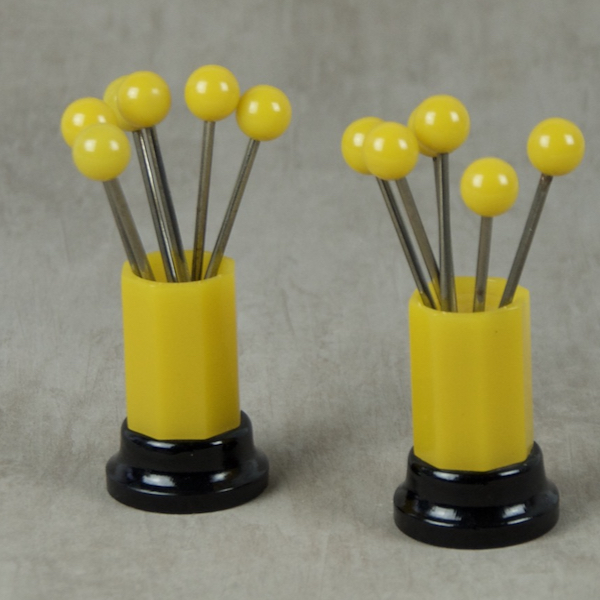French cocktail stick sets – designed to pique your interest
Quirky, fun and timelessly appealing, Art Deco cocktail stick sets are a very French phenomenon.
French cocktail stick sets became fashionable in the 1920s and stayed that way until the 1950s.
Along with other essential trimmings such as knife rests and bottle coasters, they enhanced the gastronomic experience and expressed the French art de vivre.

Cocktail sticks weren’t just for scooping olives out of martini glasses. Think amuse-bouches, snails, cockles, whelks and even cherries in eau-de-vie. Usefulness aside, their real purpose was to be admired.
Trust the French to make an art form out of spearing nibbles!

Snails galore
While many French cocktail stick designs revolve around animals, the humble snail occupies a place of its own.
The treatments are endless.
Rabier cocktail sets
Benjamin Rabier – he of the Laughing Cow Cheese logo – was the animal caricaturist of his day. Rabier (1864-1939) designed this handsome cocktail stick set, showing Gédéon the Duck parlaying with the snail.
Rabier is also believed to have created this wonderful set inspired by La Fontaine’s fable of The Fox and the Crow. If you’re lucky, you might come across its ultra-rare sister, based on another fable – The Wolf and the Lamb.
Other animal cocktail stick sets
In the Art Deco years, designers competed to create more ingenious and imaginative sets. Animals were a frequent source of inspiration.
Ric & Rac Scottie dogs
In the late 20s, the illustrator Pol Rab (1898-1933) drew the cartoon adventures of two cheeky Scottish terriers, Ric et Rac. This popular cartoon strip gave rise to a host of novelty items, including cocktail stick sets. The majority of pieces are unsigned.

Appearing in pairs or separately, the Scottie dog became the mascot of the Art Deco years.
In this unusual cocktail stick set, a Scottie leaves his mark on a trash can… Dogs will be dogs 😉
Sudre cocktail stick sets
Raymond Sudre (1870-1962) was a sculptor of note who won the Prix de Rome, twice.
Today he’s better known for his novelty barware. Miniature sculptures, full of visual wit, Sudre sets are always conversation pieces.
Modern materials
Cocktail stick sets of the 1930s used a mix of modern materials and ‘noble’ woods.
The moderns included galalith, an early plastic, and its brash, colourful rival, Bakelite. Chrome plating, a 1920s innovation, also added a modern edge.
The more expensive pieces used distinctive woods – macassar ebony, Brazilian rosewood or maple.
When these weren’t available, makers sometimes cheated using plain wood, decorated to look like macassar. These pieces tend to make up in style what they lack in quality.







































































